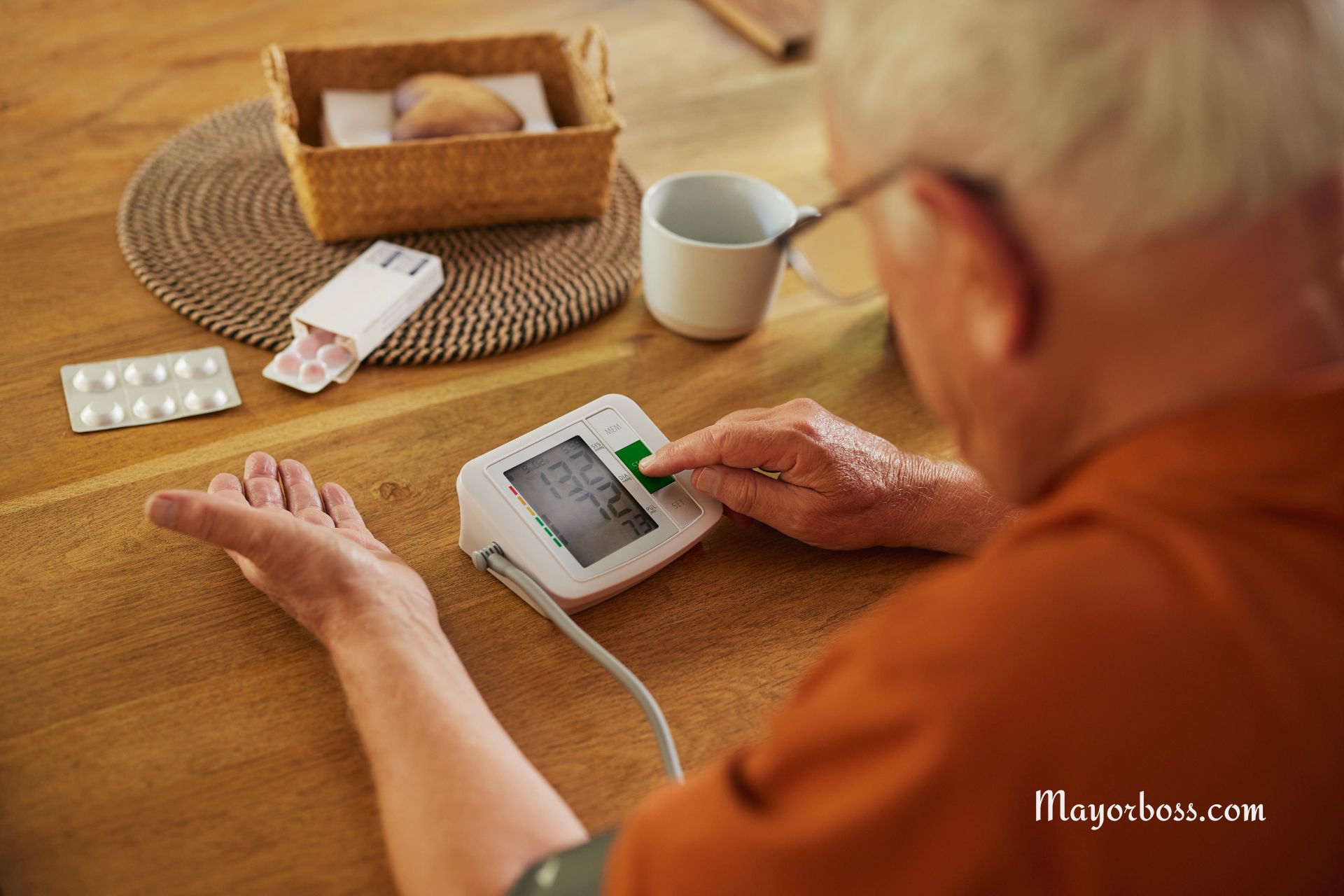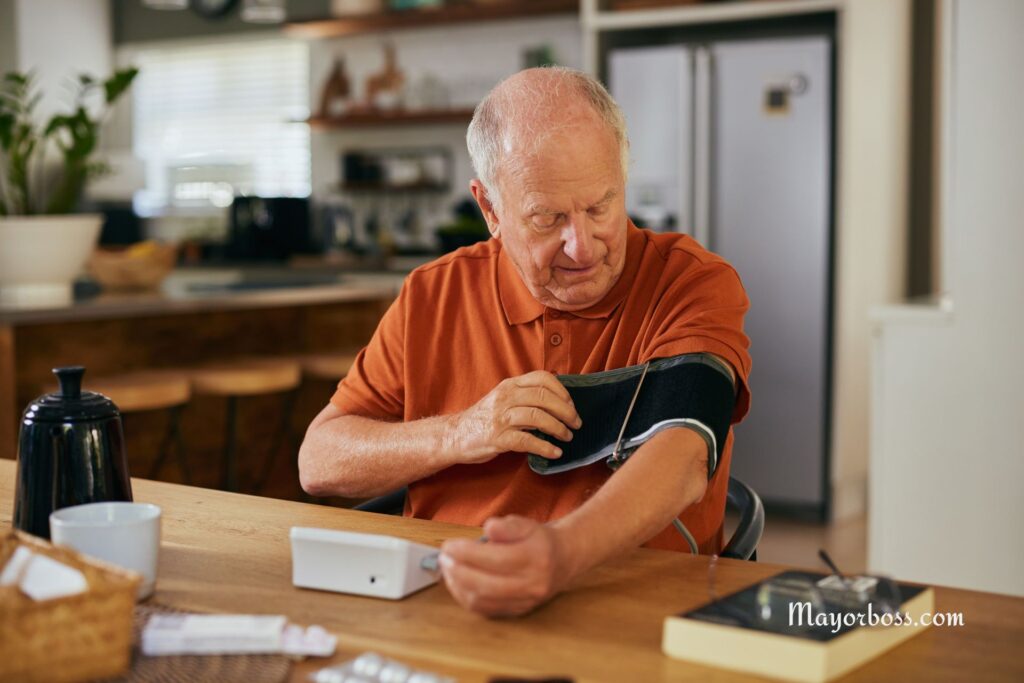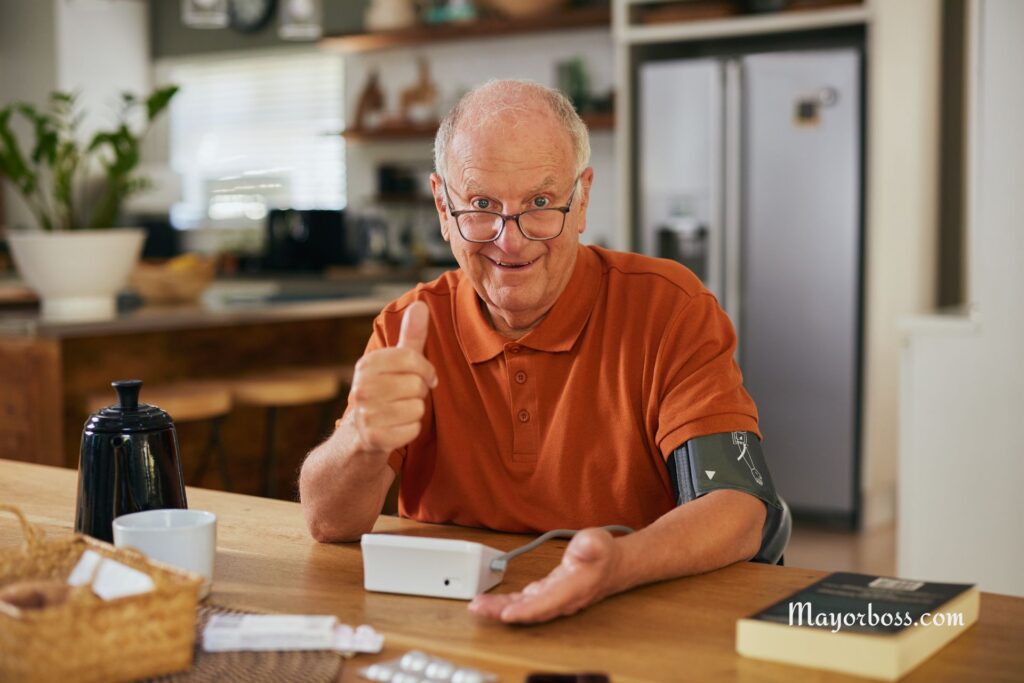How to Check Your Blood Pressure at Home
Checking your blood pressure at home is an easy way to keep track of your heart health. It helps you see if your blood pressure is too high or too low and tells you if your medicine is working. Follow these steps to get the best results.

Pick the Right Blood Pressure Monitor
First, you need a good blood pressure monitor. Doctors recommend an automatic monitor with an upper-arm cuff because it gives the most accurate readings. You can purchase it online or at most drugstores. Wrist and finger monitors are not as reliable. Make sure the monitor is approved by health experts, like the American Heart Association (AHA) or the Food and Drug Administration (FDA).
Get Ready for an Accurate Reading
To get the right numbers, follow these tips:
- Rest for five minutes before checking.
- Sit in a quiet spot with your feet flat on the floor.
- Don’t drink caffeine, smoke, or exercise for at least 30 minutes before.
- Go to the bathroom first, since a full bladder can change your reading.
- Wear a short-sleeve or loose shirt so the cuff fits well.
Sit the Right Way for a Proper Reading

How you sit matters when checking your blood pressure:
- Sit up straight with your back resting on a chair.
- Rest your arm on a table so it’s at heart level.
- Put the cuff on your bare upper arm, about one inch above your elbow.
- The cuff should be snug but not too tight—you should be able to slip two fingers under it.
How to Measure Your Blood Pressure
Follow these steps:
- Turn on the monitor and wait for it to start.
- Press the start button so the cuff inflates.
- Stay still and quiet while it measures your blood pressure.
- Wait for the numbers to show on the screen.
- Write down your results, along with the date and time.
When and How Often to Check
Doctors say it’s best to check your blood pressure at the same time each day, like in the morning and evening. Take two readings one minute apart, and average them for a more accurate number. Avoid checking right after waking up or after a big meal.
What Your Numbers Mean
A blood pressure reading has two numbers:
- Systolic (top number): The pressure when your heart pumps blood.
- Diastolic (bottom number): The pressure when your heart rests between beats.
Blood pressure levels:
- Normal: Below 120/80 mmHg
- Elevated: 120-129 systolic and below 80 diastolic
- Hypertension Stage 1: 130-139 systolic or 80-89 diastolic
- Hypertension Stage 2: 140+ systolic or 90+ diastolic
- Hypertensive Crisis: Over 180/120 mmHg (Get medical help right away)
When to Call a Doctor

See a doctor if:
- Your blood pressure is always high (above 140/90 mmHg).
- You feel dizzy, have headaches, chest pain, or trouble breathing.
- Your reading is higher than 180/120 mmHg.
Keep Track of Your Readings
Writing down your blood pressure readings helps your doctor see patterns and decide if your treatment needs changes. Use a notebook or a phone app to log your numbers. Include the date, time, and any notes about your health.
More Tips for Accurate Readings
- Always check your blood pressure at the same time every day.
- Take two readings and use the average.
- Don’t talk or move while checking.
- Make sure the cuff is the right size for your arm.
Checking your blood pressure at home helps you stay on top of your health. If you’re unsure about your numbers, talk to a doctor or healthcare provider for advice.
